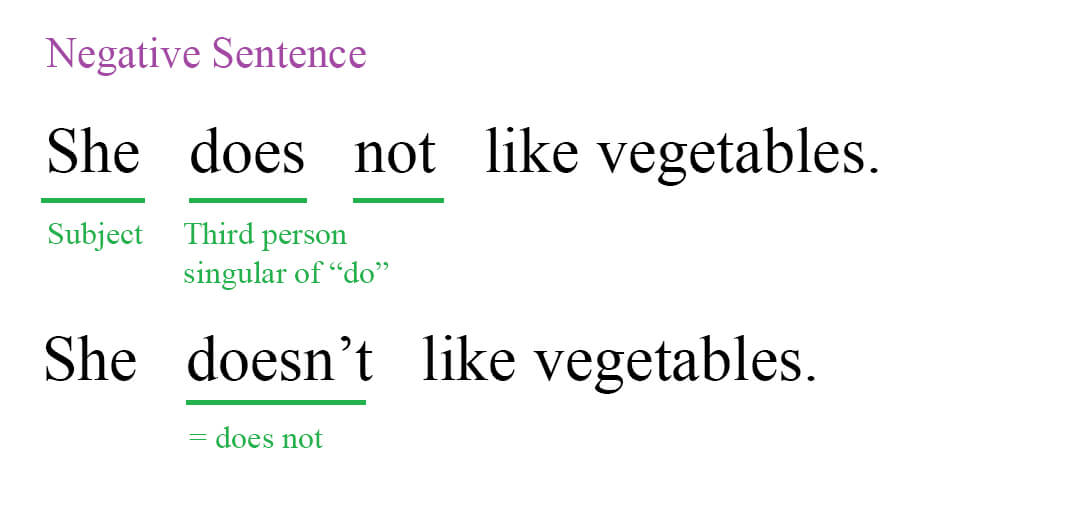Negative Sentence in Simple Present Tense
- To form a negative sentence in English, use 'do not' or 'does not' before the verb.
- For 'I', 'you', 'we', 'they', and many things or people, use "do not" or "don't".
- For 'he', 'she', 'it', or one thing or person, use "does not" or "doesn't".
- The verb that follows 'do not' or 'does not' is always in its base form.
To make a negative sentence in English, we usually use 'do not' or 'does not' before the verb. For example, if the positive sentence is "I like apples”, the negative sentence would be “I do not like apples”.
Do not / Don't
If the subject is "I", "you", "we", "they", or many things or people, put "do not" or "don't" after the subject.
"Don't" is the short form (contraction) of "Do not".
Examples:
-
You don't like apples.
Subject ("You") - don't - verb ("like") - object ("apples")
-
They do not like apples.
Subject ("They") - do not - verb ("like") - object ("apples")
Does not / Doesn't
For third-person singular (he, she, it, one thing or person), we put "does not" or "doesn't" after the subject. The verb must be in base form.

Examples:
-
She doesn't like vegetables.
Subject ("She") - doesn't - verb in base form ("like") - object ("vegetables")
-
This is WRONG: She doesn't likes vegetables.
-
It does not like apples.
Subject ("It") - does not - verb in base form ("like") - object ("apples")
Remember, the verb following 'do not' or 'does not' is always in the base form. As seen in the examples above, even though the subject 'he' usually changes the verb (like to likes), in negatives we keep the base form of the verb (like).
Practica este tema con el Tutor de inglés AI
AI English Tutor te enseñará la gramática y la practicará contigo en formato de conversación. Además, más de 100 preguntas de práctica sobre este tema para consolidar su comprensión.
Prueba ALULA gratis en tu teléfono o tableta








¿Tienes alguna pregunta sobre esta lección? Pregunta en la sección de comentarios, abajo.